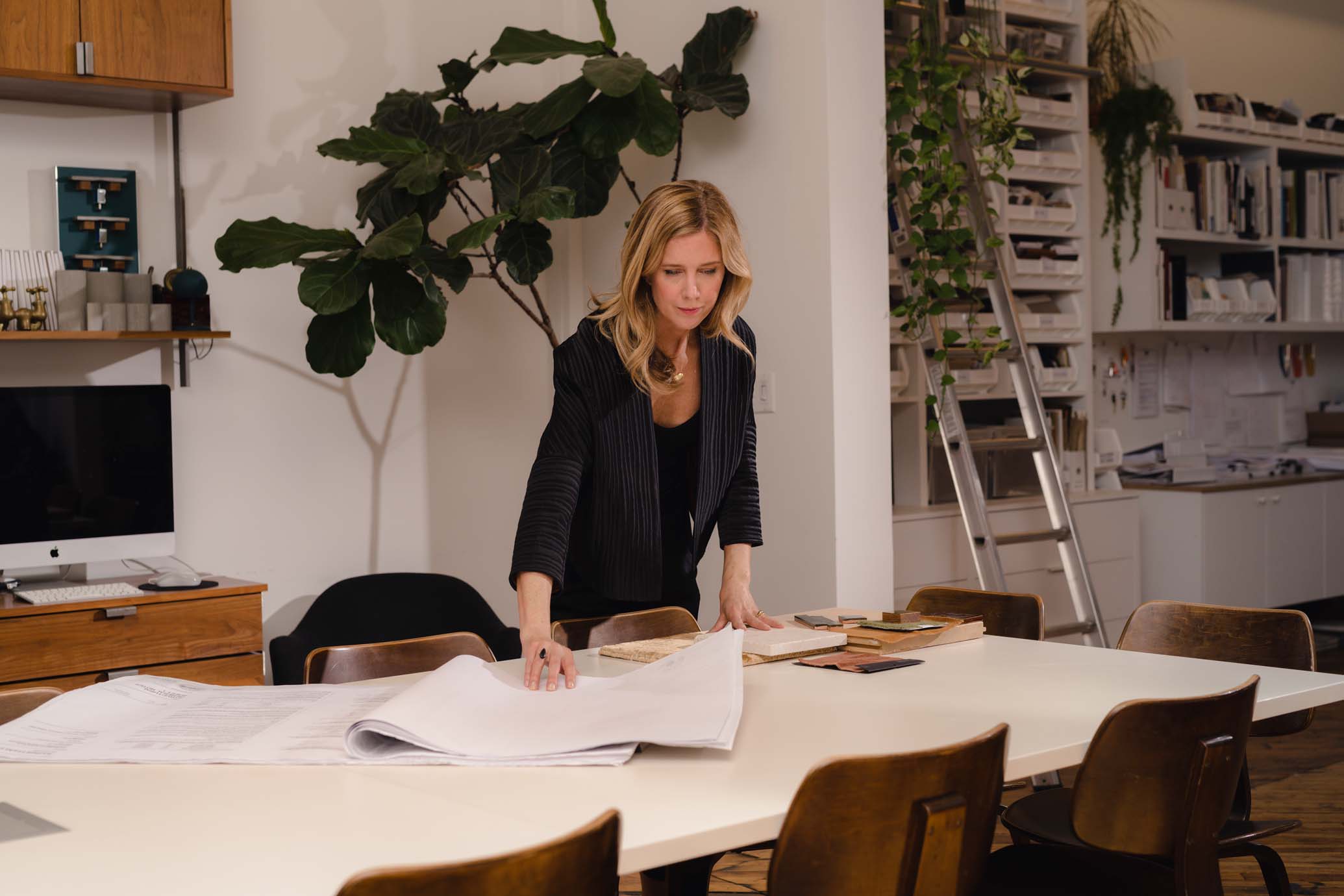
“It's a studio environment where we all bring something to our projects, and that’s for the better,” Elizabeth Roberts tells me over the phone. “Personalities are really important and all my strong, creative clients don’t just have a point of view; they are down to earth, problemsolving people.” Roberts, whose tenor is equal parts modest and warm nwhen she speaks about her eponymous architecture firm, belies the impact she has had on contemporary living ideals. Indeed, the Brooklyn based architect has been behind countless respectful transformations of outdated and run-down early New York brownstones, which she spins into bright aeries that boast both beautifully preserved crown mouldings from yesteryear as well as Instagramworthy modern kitchens.
Roberts’s devotees include a cadre of prominent female powerhouses in creative industries such as Rachel Comey, Athena Calderone and Ulla Johnson, whose home spaces have been widely covered by the likes of Architectural Digest and are sure to be aspirational lifestyle fodder for years to come. While each of these residences feel distinctive to their inhabitants, there is a tie that binds. Roberts’s skill is in navigating and mediating juxtaposition to elegant and fresh effect, leaving the homes she touches both contemporary and historically soulful.
Her education and experience reflect the duality she is recognized for; after earning her first architecture degree from UC Berkeley’s School of Architecture, where she learned modernist “start from scratch” principles, the Marin County native went on to Columbia, receiving her second degree in historical preservation. “Adaptive reuse was an important idea—it made all sorts of sense to me at a young age: using existing buildings and finding a way not to tear them down.” Roberts found beauty in the historical and industrial. “I love the elements we don’t often create anymore as architects—heavy timber, true brick walls and creating features out of historic details.” But she is quick to point out that she is no anachronist. “We build to the times—I love contrast: the glossy new with the old.”
Roberts had formative periods interning and working for famed California modernist William Turnbull, preservationist Alice Carey and the award-winning firm Beyer Blinder Belle. In 2003, after being offered a partnership at a firm in San Francisco, she decided instead to strike out on her own, turning her West Village apartment bedroom into an office. “I managed to afford it by splitting my bedroom diagonally in half with a blackout curtain,” she recalls. Roberts initially took on mostly residential projects, including a number of Brooklyn townhouses, presaging the boom that was about to occur in the residential market. “For many years I intentionally didn’t do commercial. I realized the pressure and the values were not in line with what I wanted to spend my time and energy on; I wanted to work with families to create lifetime houses,” she says.
As artful residential renovations started to become her calling card, addressing the interiors was a logical next step. “There’s no reason that when we are building a building we should stop at the walls. Why not talk about color on the walls, and the furniture?” she asks. “I’m really interested in blurring those lines.” Roberts now has six full-time interior designers on her team. She has also returned to taking on select commercial projects, starting with Rachel Comey’s flagship store in 2014. “It was such a personal expression of hers. That exploration for a beautiful, concise and lasting backdrop for her creations was a great re-entry into commercial [work] for me,” says Roberts, who most recently designed the NoMad restaurant Il Fiorista, for which she tapped artist Leanne Shapton to create bold, watercolor-like murals.
Her firm is now working on several ground-up projects and, as ever, Roberts is keen on finding the tension that will keep it interesting. “It’s easy with old buildings. New construction is more complicated. But it’s a blast finding contrast in the landscape, how it sits in nature, and bringing organic forms into a clean box,” she says. Her caché among influential women hasn’t waned, either. A roster of current clients includes chef Melia Marden, Atlantic Records executive Julie Greenwald, supermodel Daria Werbowy, jewelry designer Mary MacGill and former HBO president Sue Naegle.
Asked about her sustained influences, Roberts offers a paean to her chosen city. “I don’t know if I would have found a place as an architect if I hadn’t been so inspired by New York and its history. I love the grit, the grime and the glorious architecture,” she says. “And things evolve [here]. One thing about New York City is that nothing—or very little—is too precious to change.”



